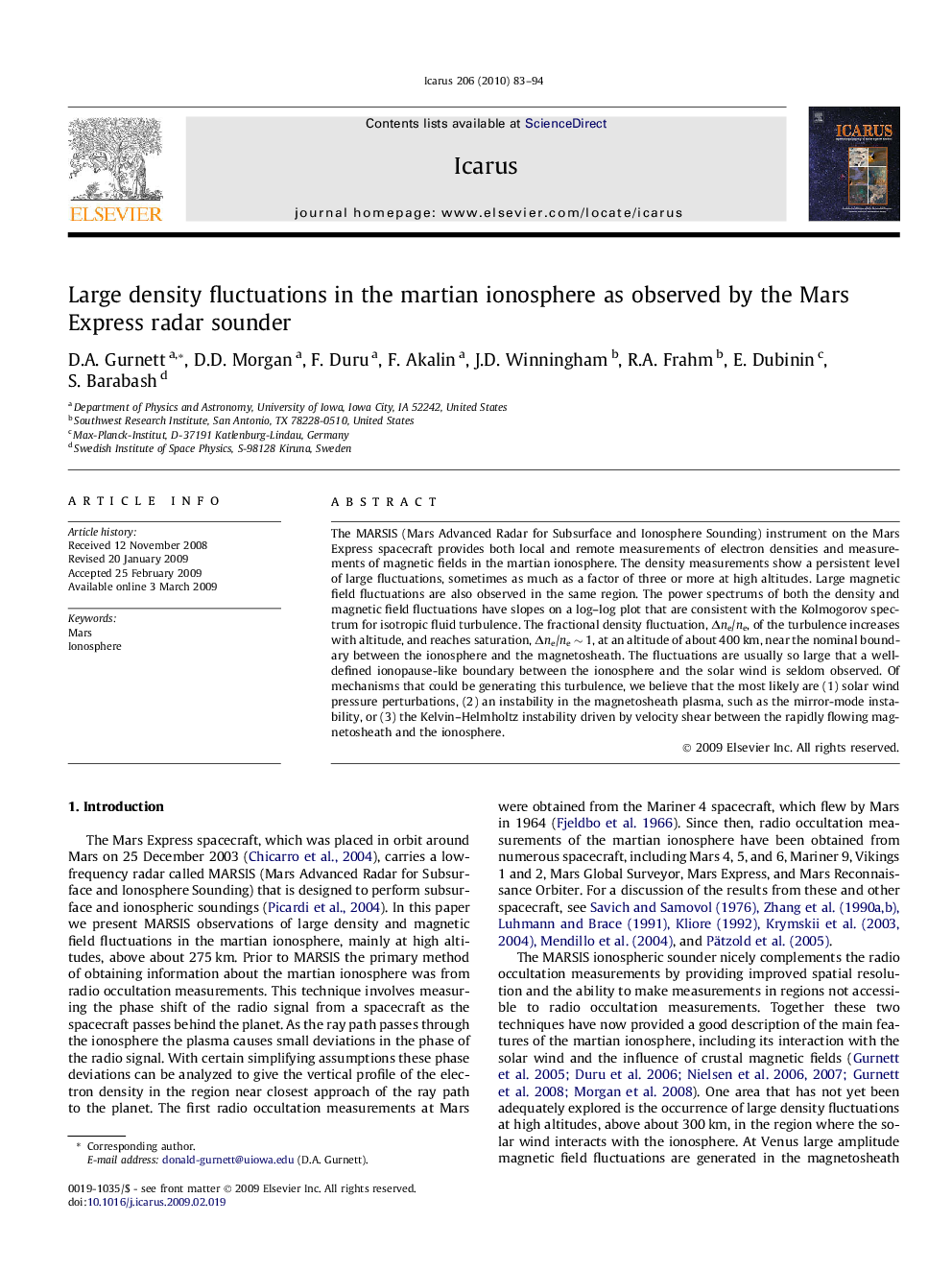| Article ID | Journal | Published Year | Pages | File Type |
|---|---|---|---|---|
| 1774711 | Icarus | 2010 | 12 Pages |
The MARSIS (Mars Advanced Radar for Subsurface and Ionosphere Sounding) instrument on the Mars Express spacecraft provides both local and remote measurements of electron densities and measurements of magnetic fields in the martian ionosphere. The density measurements show a persistent level of large fluctuations, sometimes as much as a factor of three or more at high altitudes. Large magnetic field fluctuations are also observed in the same region. The power spectrums of both the density and magnetic field fluctuations have slopes on a log–log plot that are consistent with the Kolmogorov spectrum for isotropic fluid turbulence. The fractional density fluctuation, Δne/ne, of the turbulence increases with altitude, and reaches saturation, Δne/ne ∼ 1, at an altitude of about 400 km, near the nominal boundary between the ionosphere and the magnetosheath. The fluctuations are usually so large that a well-defined ionopause-like boundary between the ionosphere and the solar wind is seldom observed. Of mechanisms that could be generating this turbulence, we believe that the most likely are (1) solar wind pressure perturbations, (2) an instability in the magnetosheath plasma, such as the mirror-mode instability, or (3) the Kelvin–Helmholtz instability driven by velocity shear between the rapidly flowing magnetosheath and the ionosphere.
